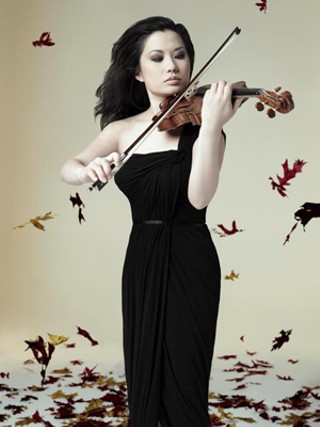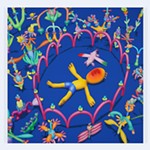Austin Symphony Orchestra With Sarah Chang
A rich concert that showed how much Peter Bay's time on the podium has meant to ASO
Reviewed by Robert Faires, Fri., May 8, 2009

Austin Symphony Orchestra With Sarah Chang
Dell Hall at the Long Center for the Performing Arts
May 1
Has Peter Bay really been leading the Austin Symphony for 10 years? For some reason – his eternally boyish looks, perhaps? – it doesn't seem that long. But the measure of Bay's time on the podium was evident throughout the penultimate concert of ASO's 98th season. No matter what was being played – and the varied material swung from new to old, bold to muted, majestic to jazzy – the orchestra sounded confident and cohesive, a true ensemble that knew exactly what it was playing and how to play it with a unified sound.
An orchestra may face no more serious test of that kind of comprehension and unity than with a new work, and in Dan Welcher's Symphony No. 5, ASO faced not only a new work but an ambitious new work. Welcher, an Austin composer of longstanding who's known Bay for 30 years and was commissioned to write the work in honor of his friend's first decade with ASO, had in mind a symphony of the old school, with the sweep, lush colors, and unfettered musical energy of a Sibelius or Shostakovich. That's a challenge to produce in these post-postmodern days, but Welcher managed a score of admirable complexity and splendor, encompassing moments of contemplation and exclamation within a richly textured musical framework that was always pressing forward, growing and deepening in feeling. Indeed, its four-note motif was first stated with an air of anxiety about it – think of the famous theme of Beethoven's Fifth turned upside down and tentatively sounded out – but over his Fifth's four movements, Welcher reconsidered and added weight to the notes until they acquired a sense of resolve that powered the music to a heart-swelling conclusion.
One could forgive ASO – or any orchestra – for not conveying all that complexity in a work's first performance, but no dispensation was necessary here. The orchestra gave a reading of the symphony that sounded its many colors in all their most vivid and subtle shadings. It was a full-bodied performance, robust and spirited in the way a symphony should sound, and shaping it with every step was Bay, his sharp, vigorous gestures, especially in the fourth movement, telling you everything you needed to know about the passion he had for his friend's composition.
The work that followed made quite different demands of the ensemble. Bruch's Violin Concerto No. 1 is very much a star turn for a soloist, with the orchestra relegated to the role of accompanist. Guest artist Sarah Chang commanded the stage and played like a woman on a mission. Her virtuosic performance seemed driven by a deep sorrow, with every phrase, even the most forceful, shaded around the edges with heartache; you could almost see tears sliding off her bow. Here, Bay was at his most fluid, smoothly guiding the orchestra to create a gentle, soft surface onto which Chang's violin could pour out its anguish.
From subdued support, ASO made an about-face to rollicking pomp, with Tchaikovsky's Capriccio italien, a work that is both heavy and light, stately and fun, in that way only Tchaikovsky can be. The piece calls for a broad, lusty sound, and with the evening's major works behind them, the musicians were able to cut loose. They appeared to take their cue from Bay, who conducted with great sweeps of his arms and an enormous grin that could be glimpsed with every animated turn of his body. Both conductor and orchestra were clearly having a grand time, and the feeling was infectious. When they finished, the crowd roared its approval.
As satisfying as the program was, however, it left you feeling you'd been moving backward for two hours. The symphony, traditionally performed last, was performed first. (I suspect that was ASO's way of guaranteeing that patrons inclined to leave at intermission would hear the Welcher premiere.) The overture, which usually opens the program, closed it. Ah well, if we moved from the end to the beginning, let it stand for the beginning of Bay's second decade with ASO. That's something well worth looking forward to.










